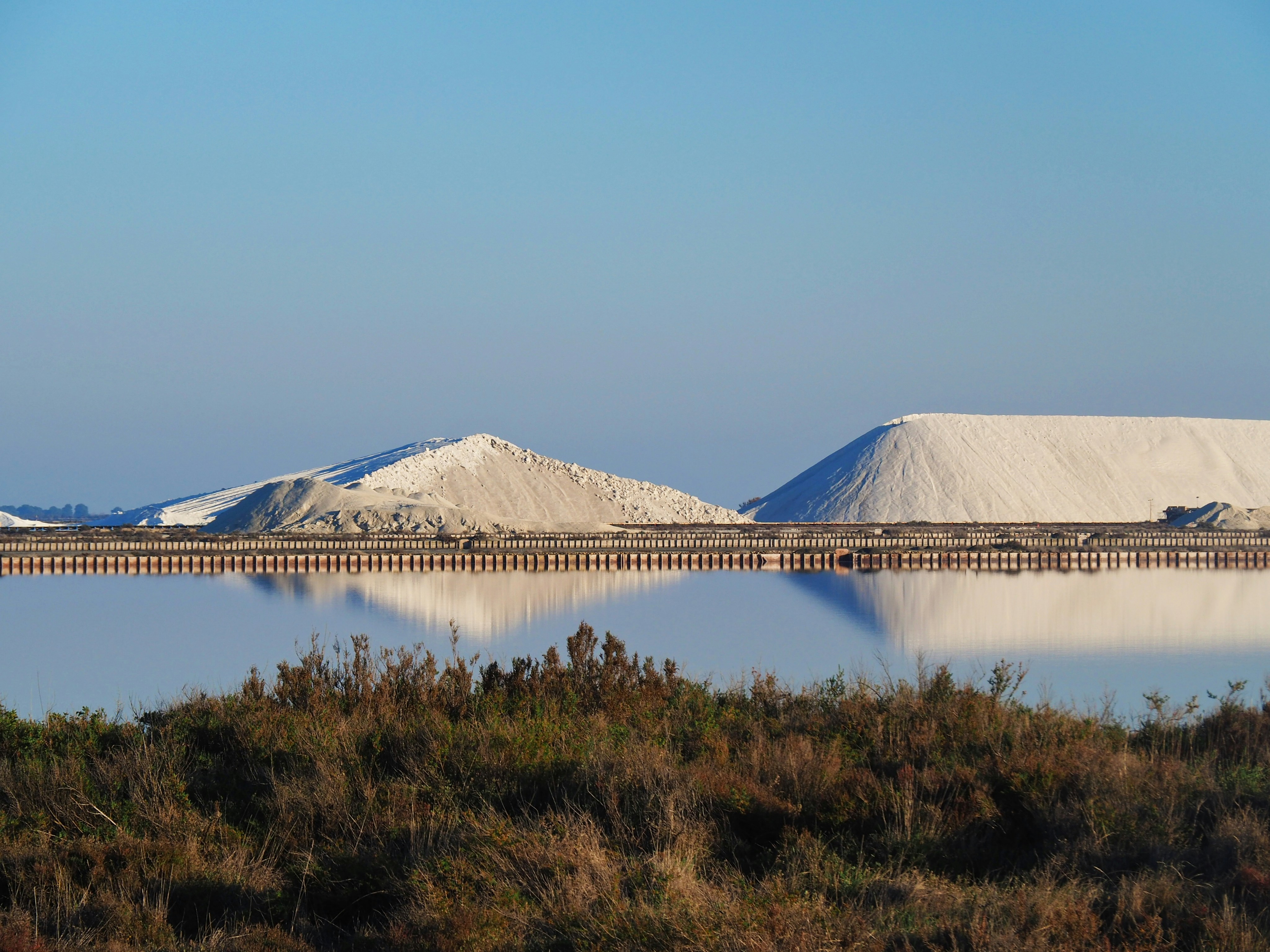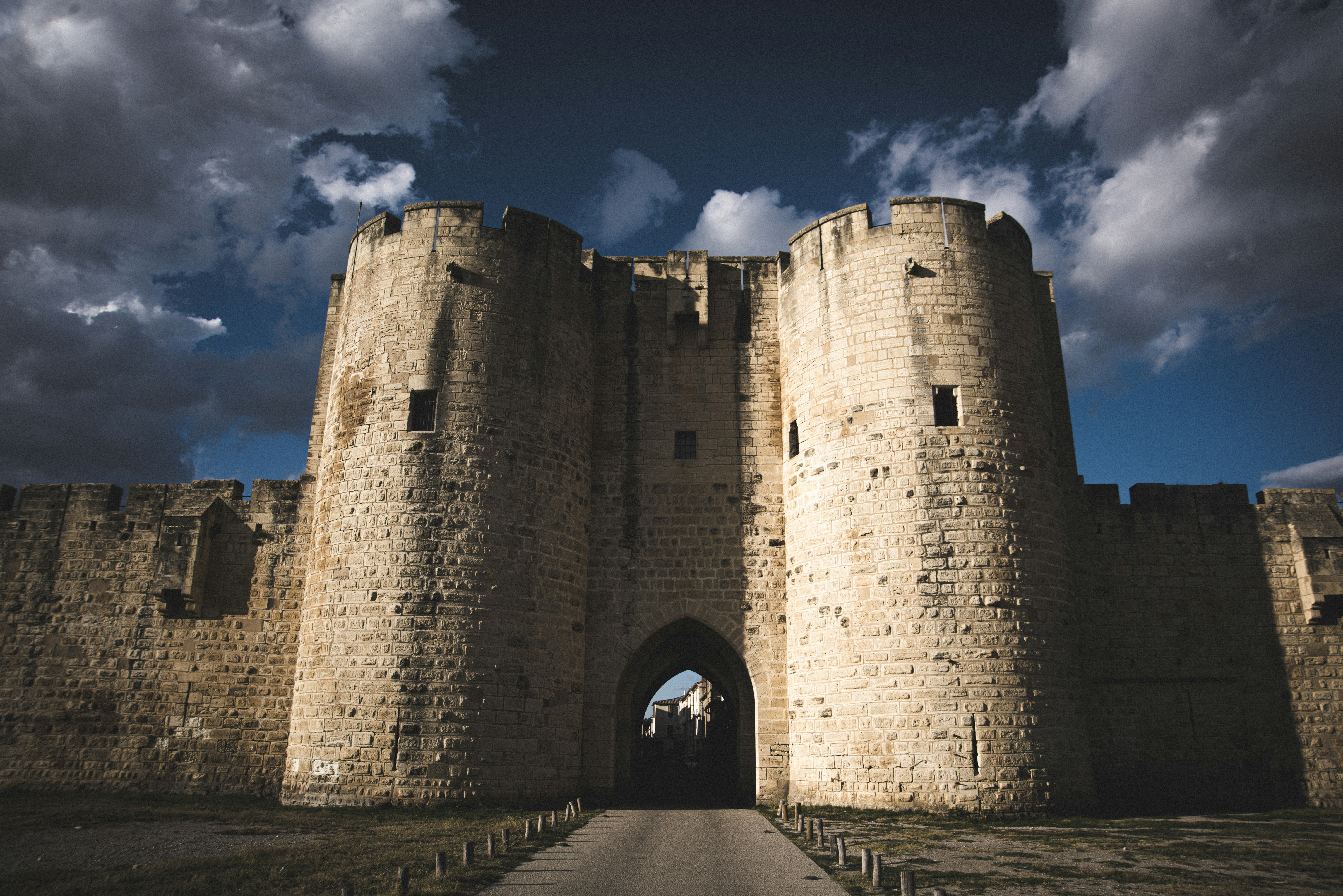Aigues-Mortes: A fortress of history in the heart of Camargue
In the sun-drenched landscapes of southern France, where the wild Camargue meets the Mediterranean Sea, a remarkable medieval city stands as a testament to centuries past. Surrounded by imposing stone walls that have withstood the test of time, Aigues-Mortes emerges from the flat, marshy terrain like a mirage from another era. This fortified town, with its grid-like streets and well-preserved ramparts, offers visitors a unique journey through history, salt production, and the untamed beauty of its natural surroundings.

A Glimpse into Medieval France
As one approaches Aigues-Mortes, the city's impressive fortifications can be seen from miles away. These massive walls, which were built in the 13th century under the reign of Louis IX, are considered among the best-preserved medieval city walls in Europe. The town's name, which translates to "dead waters," is derived from the surrounding marshlands and lagoons that have shaped its history and economy for centuries.
Upon entering through one of the city gates, visitors are transported back in time. The narrow streets are laid out in a perfect grid pattern, a rarity for medieval towns and a testament to the city's planned construction. The central square, Place Saint-Louis, is dominated by the statue of the town's founder, Louis IX, and surrounded by charming cafes and restaurants where the flavors of Provence can be savored.
Things to do in Aigues-Mortes
The Tower of Constance: A Symbol of Resilience
One of the most striking features of Aigues-Mortes is the Tower of Constance, a formidable circular tower that served various purposes throughout its history. Originally built as a lighthouse and defensive structure, it later became a notorious prison. The tower is perhaps best known for its role during the religious wars of the 16th and 17th centuries, when it was used to imprison Huguenot women who refused to renounce their Protestant faith.
Today, the tower can be explored by visitors, offering panoramic views of the town and the surrounding Camargue from its upper levels. The stark interior, with its thick walls and narrow windows, serves as a poignant reminder of the struggles and perseverance of those who were once held within.
The Salins: A Landscape of Salt
Beyond the city walls, the landscape is dominated by the vast salt flats that have been a crucial part of Aigues-Mortes' economy for centuries. These salins, with their patchwork of shallow pools in various shades of pink and white, create a surreal and beautiful vista. The salt production process, which relies on the evaporation of seawater under the intense Mediterranean sun, has remained largely unchanged for generations.
Visitors can take guided tours of the salt flats, learning about the history and techniques of salt harvesting while marveling at the unique ecosystem that has developed in this hypersaline environment. The sight of flamingos wading through the pink-tinged waters is a particularly memorable experience, highlighting the delicate balance between industry and nature in this region.
A Gateway to the Camargue
Aigues-Mortes serves as an ideal base for exploring the wild beauty of the Camargue, a vast wetland area known for its unique flora and fauna. The region is home to semi-wild white horses, black bulls, and a diverse array of bird species, including the iconic pink flamingos. Guided tours and horseback rides through the marshes offer visitors the chance to immerse themselves in this untamed landscape.
The nearby Étang de Vaccarès, a large lagoon at the heart of the Camargue Regional Nature Park, is a haven for birdwatchers and nature enthusiasts. Here, the interplay of fresh and saltwater creates a rich ecosystem that supports a wide variety of plant and animal life.
Culinary Delights and Local Traditions
The cuisine of Aigues-Mortes reflects its unique position between land and sea. Local specialties include gardiane, a hearty beef stew flavored with local red wine, and tellines, small shellfish harvested from the nearby beaches. The town's proximity to the Camargue also means that rice dishes feature prominently on local menus, often accompanied by the fleur de sel harvested from the surrounding salt flats.
Throughout the year, Aigues-Mortes comes alive with festivals and events that celebrate its rich history and cultural heritage. The Fête de la Saint-Louis in August is particularly noteworthy, featuring medieval reenactments, parades, and music that transform the town into a living museum of its 13th-century origins.

As the sun sets over the ancient walls of Aigues-Mortes, casting long shadows across the salt flats and marshes, the timeless beauty of this unique corner of France is revealed. Whether exploring the narrow streets within the fortifications, marveling at the pink waters of the salins, or venturing into the wild Camargue, visitors to Aigues-Mortes are treated to an experience that seamlessly blends history, nature, and the enduring spirit of medieval France.
For those seeking to further explore the rich tapestry of French history and culture, a visit to Avignon can be highly recommended, where the grandeur of the papal palace awaits just a short journey away.
Top attractions in Aigues-Mortes
Show all
Towers and Walls of Aigues-Mortes
In the heart of the Camargue region, Aigues-Mortes stands as a testament to medieval architecture and rich history. This fortified town, surrounded by ancient walls, invites exploration and discovery. The sun-drenched streets buzz with life, and the scent of salty sea air mingles with the aroma of local cuisine. Each corner reveals a story, a glimpse into the past that shapes the present and future of this charming destination.
Aigues-Mortes - FRANCE

Petit train d’Aigues-Mortes
The charming town of Aigues-Mortes, with its rich history and stunning landscapes, beckons travelers from near and far. Surrounded by the picturesque Camargue region, the allure of this destination lies not only in its medieval architecture but also in the vibrant natural beauty that envelops it. The iconic fortifications and the essence of its surroundings create an inviting atmosphere for exploration.
Aigues-Mortes - FRANCE

Musée du sel
Aigues-Mortes, a charming fortified town in the south of France, offers visitors a unique blend of history, culture, and stunning landscapes. The ancient walls and towers tell tales of a vibrant past, while the surrounding marshlands are alive with the sounds of nature. This picturesque destination has drawn travelers for centuries, all eager to uncover its secrets.
Aigues-Mortes - FRANCE

Constancy Tower
The charming town of Aigues-Mortes, located in the heart of the Camargue region, invites travelers to experience its rich history and stunning architecture. The sun-soaked streets echo with stories from centuries past, as visitors wander through the well-preserved medieval walls that encircle this historic gem. Each corner turned reveals another piece of the puzzle that is Aigues-Mortes, a destination where every brick has a tale to tell.
Aigues-Mortes - FRANCE

Le petit train des salins d'Aigues Mortes
Aigues-Mortes, a charming town in the south of France, is celebrated for its rich history and breathtaking landscapes. In this picturesque locale, the natural beauty of the surrounding wetlands and the remnants of medieval architecture create an enchanting atmosphere. Visitors are drawn to this area for its unique offerings and the delightful experiences that await them.
Aigues-Mortes - FRANCE

Place Saint Louis
Aigues-Mortes, a charming medieval town in the south of France, draws visitors with its well-preserved architecture and rich history. The vibrant streets echo with tales of the past, while cafés and shops invite exploration. Among the highlights of this captivating destination, Place Saint Louis stands out as a focal point for both locals and travelers, where the essence of Aigues-Mortes can truly be experienced.
Aigues-Mortes - FRANCE
Michelin Restaurants in Aigues-Mortes
Show all
L'Atelier de Nicolas
This restaurant, bang in the historic heart with a wrought iron and glass front door, is where chef Nicolas rolls out a modern line-up, with the odd Asian twist picked up during his forays to Thailand. Examples include Tom Kha Kung (spicy soup) of shrimp and coconut milk or a Wellington-style Kushikatsu of Camargue bull. Each Asian-sounding, fresh, aromatic dish comes with lashings of reassuring explanations! The chef works with local organic producers and breeders whenever possible and the concise wine list demonstrates a distinct fondness for natural tipples.
Aigues-Mortes - FRANCE
Related articles
Show all
Best 15 things to do in Grasse
The French Riviera conjures images of glamorous beaches and star-studded film festivals, but tucked away in the hills above the coast lies a town that captivates visitors with a different kind of allure. Here, the air itself tells a story - one of blooming flowers, age-old traditions, and the art of perfume-making. Welcome to Grasse, where history and fragrance intertwine to create an unforgettable sensory experience.
Grasse - FRANCE

Top 15 things to do in Mâcon
Nestled along the banks of the Saône River in the heart of Burgundy, a charming town awaits discovery. With its rich history, stunning architecture, and proximity to world-renowned vineyards, this hidden gem offers a perfect blend of culture, gastronomy, and natural beauty. Whether you're a history buff, wine enthusiast, or simply seeking a tranquil escape, the following activities will ensure an unforgettable visit to this picturesque French destination.
Mâcon - FRANCE

Top 15 things to do in Rennes
Brittany's capital city beckons with a harmonious blend of history and modernity. Medieval half-timbered houses stand proudly alongside sleek contemporary architecture, while vibrant markets and innovative art spaces create a dynamic urban tapestry. For travelers seeking an authentic French experience off the beaten path, this Breton gem offers a wealth of captivating attractions and experiences.
Rennes - FRANCE

Stunning places to visit in France
France is the most visited country in the world! The "Land of Love" certainly has its work cut out to impress worldly travelers, and it does not disappoint.
FRANCE

Best 15 things to do in Montpellier
In the sun-drenched Languedoc region of southern France, a city of contrasts awaits discovery. Medieval alleyways give way to cutting-edge architecture, while centuries-old traditions blend seamlessly with youthful innovation. For travelers seeking a unique blend of history, culture, and Mediterranean flair, this vibrant urban center offers a wealth of experiences. From wandering through ancient squares to savoring local delicacies, the following activities showcase the best this captivating destination has to offer.
Montpellier - FRANCE

Villefranche - A nice and picturesque old town
The Villefranche-sur-mer is a seaside resort located at the foot of the Alps, on the Mediterranean eastern coast, in the French Riviera. This picturesque town is a few miles away from Nice and its Alpes-Maritimes setting makes it a favorite among tourists visiting the Côte d’Azur. Among its prime attractions are the Villefranche pebble beach and the bay’s deep natural harbors that are great for swimming enthusiasts. For those looking to experience the region’s exotic cultural and historical sites, the Citadel of Villefranche-sur-mer, the Saint Elme Citadel, Amelie’s market and the St Michel Church are some of the best places to visit in Villefranche. By and large, its rich maritime, as well as cultural diversity and its proximity to Nice, make Villefranche a great spot to shop, grab a bite while on route to the far side of Mont Boron, or enjoy an adventure to its well-kept and colorful hill town.
Villefranche-sur-Mer - FRANCE

 Home
Home Wishlist
Wishlist